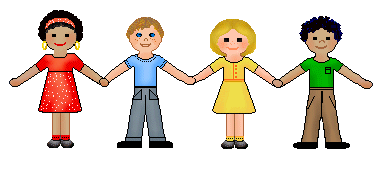In his book, Frames of Mind: The Theory of Multiple Intelligences, Howard Gardner claims that all human beings do not have a single intelligence but actually possess a set of multiple autonomous intelligences. How does this relate to the young child, and how can we as early childhood teachers use the MI theory to assess children?
Gardner (2011) has defined intelligence as, “the ability to solve problems, or to create products, that are valued within one or more cultural settings – a definition that says nothing about either the sources of these abilities or the proper means of 'testing' them” (p.xxviii). He proposes three different uses of the term intelligence. It is a property that all people have, it is used in different ways, and is applied to carry out tasks to achieve a goal. “These intelligences (or competencies) relate to a person’s unique aptitude, set of capabilities and ways they might prefer to demonstrate intellectual abilities” (http://www.niu.edu).
Howard Gardner has challenged the assumption that intelligence is a single entity that can be measured purely through IQ testing. He also questioned Piaget's work on cognitive development and gives evidence to suggest that, “a child may be at very different stages for example, in number development and spatial/visual maturation. Howard Gardner has successfully undermined the idea that knowledge at any one particular developmental stage hangs together in a structured whole” (infed.org).
Howard Gardner has identified a number of intelligences based on meeting strict criteria. The theory of multiple intelligences proposes nine different pathways that teachers can include in their programme for children to connect with. With brief descriptions on how they relate to early childhood settings, these are:
-
Linguistic intelligence (A child's potential to express himself and understand others)
-
Logical-mathematical intelligence (An understanding of numbers and quantities)
-
Spatial intelligence (A child's awareness of physical space, as well as the arts)
-
Bodily-kinesthic intelligence (An awareness of the body and movement. This can include the sense of touch or a potential towards physical activity)
-
Musical intelligence (A child's sensitivity towards music and sound)
-
Interpersonal intelligence (A child's understanding towards interacting with others)
-
Intrapersonal intelligence (A child's awareness of what he can or cannot do as he feels confident with himself)
-
Naturalist intelligence (An understanding and sensitivity towards all living things)
-
Existentialist intelligence (A recent intelligence proposed by Howard Gardner which suggests a questioning child around what he feels and sees in the environment around him)
An early childhood teacher can work with these intelligences to identify a particular child's strengths and offer the tools to support that learning area. For example, if a child has a competency in linguistic intelligence, a teacher could encourage him to tell stories during mat time. If one looks at all the intellegences and did a child study, a teacher could also identify an approach to learning in different areas for the child to achieve greater competency levels.
Howard Gardner's multiple intelligences theory offers early childhood teachers a method to account for the potential a child has in the early years. The multiple intelligences can be categorized into headings under which a child's information can be recorded. For example, oral language skills can be noted under linguistic intelligence, and numeracy skills under logical-mathematical intelligence. “The primary advantages of this organizational system are that it reveals the child's strengths at a glance and indicates whether a balance of activities has been offered” (Brewer, 2007). These assessments can benefit children with special needs as it can assist teachers to discover strengths in the child to work with, that they may not have otherwise found.
It is also clear that when we examine intelligence, there cannot be any separation from background and culture. In this respect, when a teacher is assessing a child's multiple intelligences he has to take into account the child's social influences, interests, competence, and willingness in the situation (Lefrancois, 2000). From an early childhood perspective teachers can determine strengths of a child based on the multiple intelligences, and also include a range of activities in the environment based on assessments. For example, if we highlight spatial intelligence to promote an awareness of physical space, we can set up an obstacle course activity in the outdoor area.
In conclusion, I personally believe in exposing children to an environment in an early childhood setting that offers a range of learning experiences. This exposure could be through nature walks or settings within the centre. All intelligences are interlinked, with individuals displaying particular ones to demonstrate their preferred form of expression. Howard Gardner's multiple intelligences theory offers teachers an assessment tool to highlight and work on a child's strengths, as well as to build on the other capabilities towards becoming competent learners on a path of lifelong learning.
References
Brewer, J.A. (2007). Introduction to early childhood education. Pearson Education Inc.: Boston, MA.
Gardner, H. (2011). Frames of Mind: The Theory of Multiple Intelligences. Basic Books: New York.
Howard Gardner, multiple intelligences and education. http://infed.org/mobi/howard-gardner-multiple-intelligences-and-education/
Lefrancois, G.R. (2000). Psychology for teaching. Thomson Learning: Belmont,CA.
